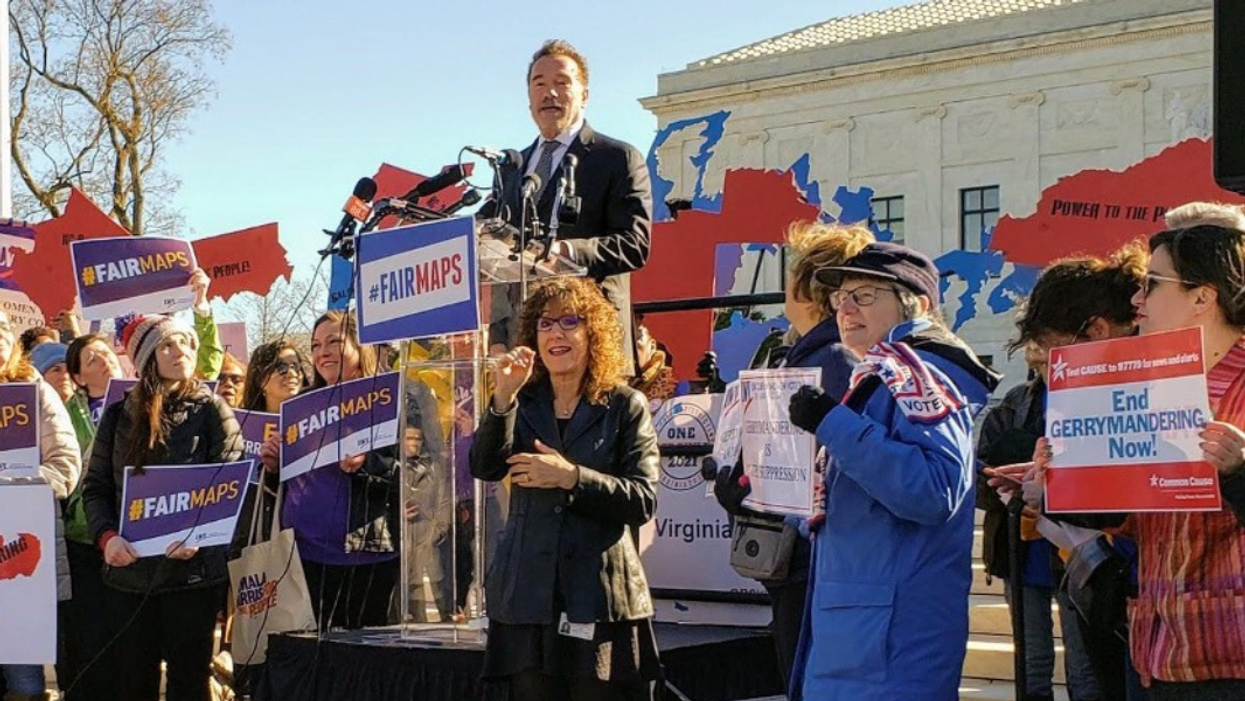Gorrell is an advocate for the deaf, a former Republican Party election statistician, and a longtime congressional aide.
On December 12, 2000, major television news networks assigned their fastest staffers on feet to deliver a written issuance of the U. S. Supreme Court decision on the Bush v. Gore case from the court clerk's office to their respective two-news reporters' teams on the Court's 252-foot-wide oval plaza. While speeding, the runners flipped to the last few pages and verbally told the final ruling to their first reporter, and then the first one announced the result to the viewers quickly, while the second reporter flipped 158 pages to add more comments for the viewers.
Being deaf since birth, I focused on the closed caption on my television to know the result.
Today, having television to know what the Supreme Court will rule on the Moore v. Harper case is unnecessary since we use our smartphones to quickly get the result.
The Moore watchers are waiting to know if the Court would moot the "single most important case on American democracy in the nation's history" (according to a leading conservative former federal judge J. Michael Luttig) or if the Court would decide by late June or early July. (Several scholars and I believe the Court may issue a narrow final opinion by ruling the Independent State Legislature Doctrine/Theory applying only to redistricting.)
In this case, the Supreme Court is considering whether a state legislature itself could have the power to set rules on congressional district lines and the state judiciary could play no role.
Will it end gerrymandering if the Court rules in favor of Moore? Nay, it will be the opposite - making partisan and racial gerrymandering even worse. The ISL theorists have feared that the North Carolina state legislature is free to adopt new maps or use old ones for 2024 that eliminate up to four Democratic seats.
This favor would also eliminate nine independent redistricting commissions. If so, the Democratic-controlled New York state legislature could go from a 19D-8R map to a 23D-3R map, including gerrymandering Rep. George Santos (R) out. Same as Maryland, where the state government is controlled entirely by Democrats for the first time in eight years, for sweeping all eight congressional seats in 2024.
If mooted or the Court denies the Petitioners, it shall continue the gerrymandering war for another decade!
For 53 years since I got a job with the National Republican Congressional Committee as Assistant Election Statistician in 1970, I have been tired of reading/listening to the Democratic Party and Republican Party pointing to each other for gerrymandering congressional maps every decade.
For example, I got confused by The New York Times declaring "the fairest House map of the last 40 years." The indisputable fact is that forty years ago, in 1982, the Democratic Party gained 27 seats in the House of Representatives of the 83rd Congressional Session - 269 Democrats and 166 Republicans. 269 was the highest seat number in the last 40 years. Twenty-three Democratic state legislatures gerrymandered most seats.
However, 28 years later, in 2012, a Republican wave (fueled partly by fundraising for the Republican State Leadership Committee’s Redistricting Majority Project) resulted in all-GOP state governments getting to draw almost half the 435 congressional districts the following year. Also, the Republican Party took over the House of Representatives for the first time in 56 years (1954.) This result was one of President Barack Obama’s most embarrassing moments.
Today, most of the public has blamed the Republican Party for gerrymandering during the 2020 census cycle. It is slightly true, but they must have forgotten that the Democratic Senate did zero to end the gerrymandering during the 213 days of their filibuster-proof 60-vote majority in the Senate from July 7, 2009, to February 4, 2010.
This commentary urges state legislatures and independent redistricting commissions to use school districts to draw congressional maps.
In Maryland, interested residents could draw congressional maps to submit for consideration to its redistricting commission. On September 19, 2011, I sent my third-party submission to the commission. One month later, my congressional district plan caught the eyes of Maryland's well-known election analyst, Dr. Todd Eberly. He wrote about my proposal in his political blog, "The Free Stater Blog."
Eberly believed that the plan truly represents the diversity of the state - my decision to rely on the school district as the basic unit of "community" represents a true understanding of the building blocks of neighborhoods and common ground.
A few days later, I received a surprise email from Maryland Delegate Susan McComb (R). She congratulated me by informing me, "Actually, the Harford County Council Redistricting Commission used your idea of the schools as communities of interest. It was very successful since there was no opposition to the proposal at the public hearing. Naturally, common sense and communities of interest will not win the day, but you have done a good job."
To know how to add clusters of high schools and their feeder schools in redistricting, you may read my five drawing steps.
Eberly admitted that he tried to keep counties together at all costs. He thought "[my] use of school districts was a great way to keep community connections intact even when crossing county lines." So Eberly strongly believes that using school clusters is an excellent way to define “communities of interest.” Reminder that 23 states that do not have criteria for preserving communities of interest.
A decade later, Rep. John Sarbanes (D-Md.) sponsored his doomed bill, the "For the People Act of 2021," which stated that, among other things, calls for including this language: "Communities of interest may include political subdivisions such as counties, municipalities, tribal lands, and reservations, or school districts."
At the New York State Independent Redistricting Commission public hearing last February, a local school superintendent, Daniel Henner, gave his feedback --- encouraging the commissioners to “think not just of county lines but also school district lines as the schools build relationships with their district's legislators.” He paused, "Where the school building is might not be where the representative is. They might represent people in our district, but not where the school building is."
So you, standing in front of the school building, would wave at only a congressional candidate of each party, instead of two or three sets of political candidates from the other gerrymandered congressional districts, in your local parades.




















